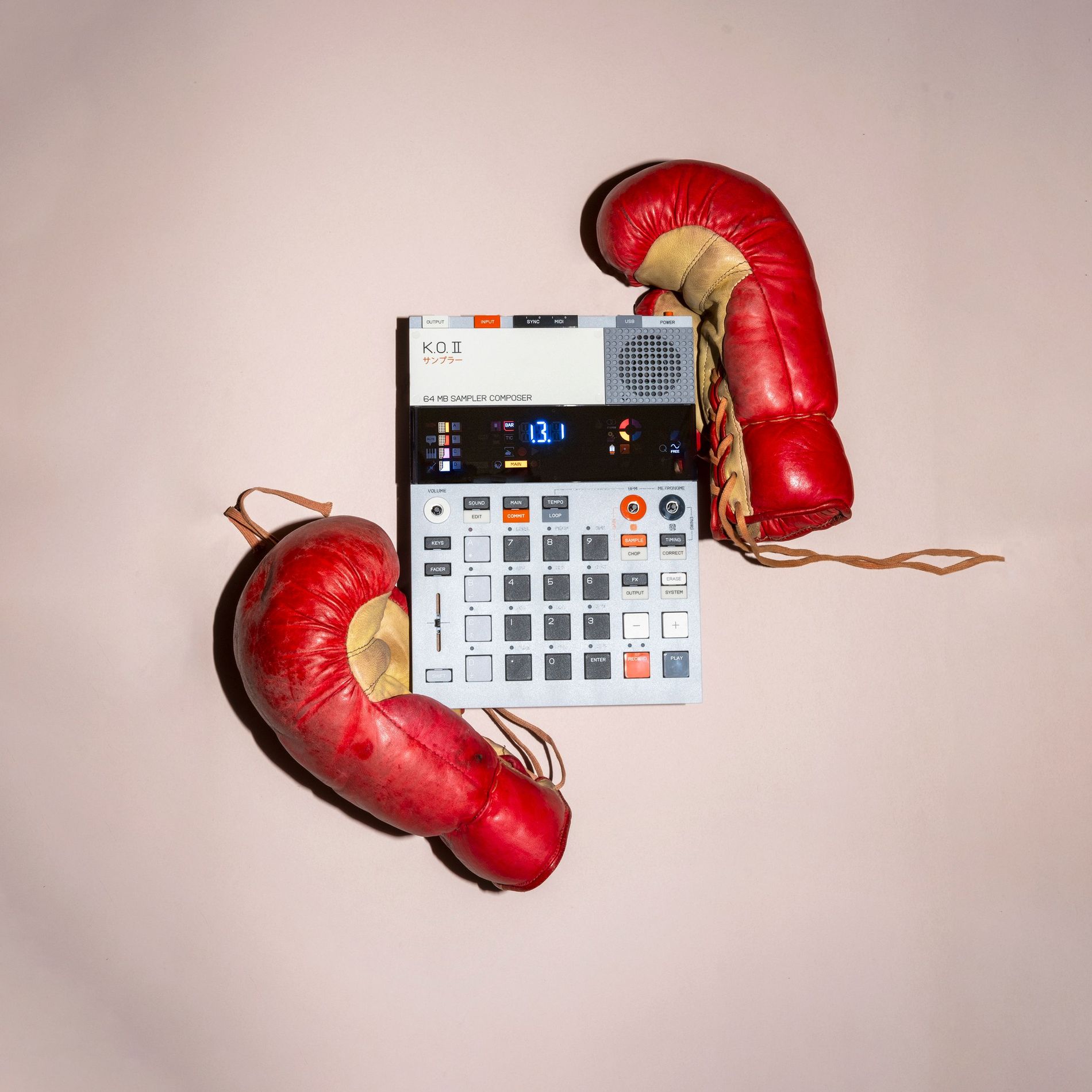This sampler by Swedish Teenage Engineering is as coveted as an It-bag of the season – read on to discover why
The EP-133 K.O. II, a retro-future-looking gizmo designed by buzzy Swedish electronics company Teenage Engineering, flies off shelves with the speed of a hyped luxury handbag. Small enough to fit in said handbag, it allows its user to sample and sequence soundbites and compose those soundbites into music. According to Jesper Kouthoofd, Teenage Engineering co-founder and head of design, it sits neatly between toy and tool, appealing to both hobbyists and professional musicians. “What musicians discover when they start to use it is that it’s actually a serious machine,” he says. Having sold out on its late-November release day, it continues to sell out immediately with each restock.
Kouthoofd, who’s half Swedish and half Dutch, founded Teenage Engineering along with friends David Eriksson, Jens Rudberg and David Möllerstedt back in 2005. Serially restless (or, as he describes it, frequently bored), he had dabbled in designing record sleeves, advertising and even co-founded a little Swedish brand by the name of Acne Studios (he left the brand in 2003). Teenage Engineering, however, seems to scratch a long-held itch. “In my heart, I always wanted to be an engineer,” he says.
Related: Is Daniel Ek’s Neko Body Scan the Spotify of healthcare? Here’s everything you need to know
If we think something is right, we can’t drop it. It’s a kind of mental disorder
Jesper Kouthoofd
While the brand has found success amongst sound and music aficionados through its high-end speakers and synths, the beauty of the EP-133 K.O. II lies in its accessibility. “We used all the stuff we learned doing the more expensive stuff and tried to find a way to make a product that’s not overly complex,” Kouthoofd says. In creating the look, Kouthoofd wanted to communicate that it isn’t “an exclusive fashion design object” but rather something practical and intuitive. The buttons and dials are laid out in a grid, colour-coded for ease of use. Kouthoofd admits this “rational” approach to design is rather Swedish. “Ikea is a great symbol for that,” he says.
When it came time to design the packaging, only one image would do: the iconic photograph of Mohammad Ali standing over Sonny Liston – a nod to the ‘K.O.’ (knockout) in the product’s name (the EP stands for ‘extended play’). It’s an unusual choice, given packaging for electronics typically features an image of what’s inside the box. “It was of course super expensive and the whole licensing thing was very complicated. It took almost a year to negotiate the whole deal,” says Kouthoofd. So why bother? “If we think something is right, we can’t drop it. It’s a kind of mental disorder.”
